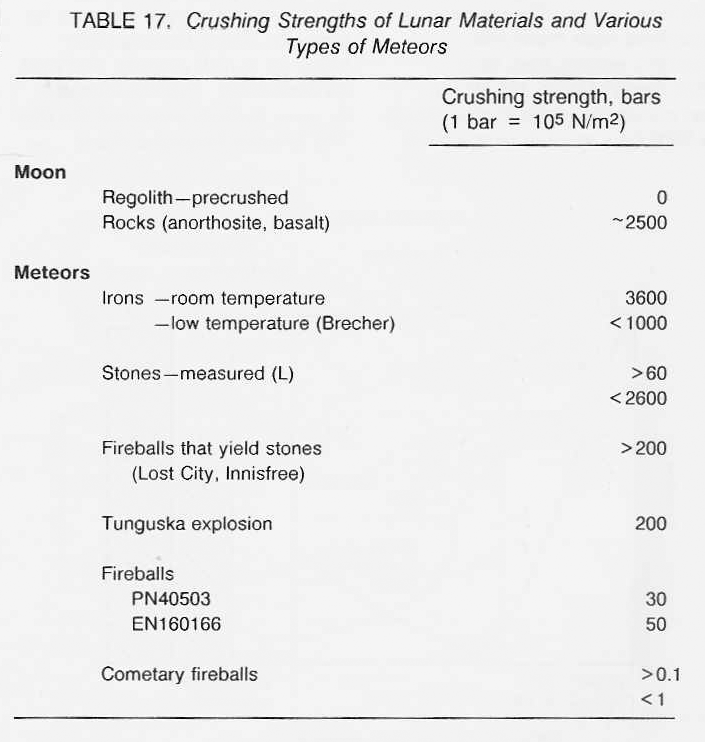![[NASA]](images/NASAball.gif)
![[Ames Research Center]](images/arclogo1.gif)
|
WebWork: Al Globus, Bryan Yager, and Tugrul Sezen |
![[LifeSciences]](images/lslogot.gif)
![[Space Settlement]](images/splogosm.gif)
|
Mechanical Properties of Meteorites
Meteorites have seldom been subjected to tests of bulk physical properties. There is a great variation in crushing strength and porosity, with C1 chondrites apparently most porous (more than 10 percent of their volume is pores) and weakest (crushing strengths of only a few bars). The ordinary chondrites have measured strengths ranging from 60 to 2600 bars (1 bar = 105 N/m2). Iron meteorites range in strength up to 3600 bars at room temperature. At low temperature and in the presence of hydrogen, these are subject to embrittlement and should be much easier to crush. However, iron asteroids, if found, would present significant processing challenges.
Meteorites are the subset of nonterrestrial projectiles that survive entry into the atmosphere. Thus, they have been selected for strength. Stony fireballs often break up at high altitudes and yield no meteorites. Typical strengths for such fireballs are about 40 bars. The famous Tunguska object that detonated over Siberia in 1908 completely ruptured under an aerodynamic pressure estimated at 200 bars. Fireballs associated with the orbits of known comets break up at loadings of 0.1 to 1 bar. This may be a very important and relevant datum, since some near-Earth asteroids are thought to be extinct comet nuclei. Beneath surface dust mantles, such asteroids may be 60 percent or more ice.
The available data on the crushing strengths of Earth-crossing bodies are summarized in table 17.
 Next
Next
![[NASA]](images/NASAball.gif)
![[Ames Research Center]](images/arclogo1.gif)
|
WebWork: Al Globus, Bryan Yager, and Tugrul Sezen |
![[LifeSciences]](images/lslogot.gif)
![[Space Settlement]](images/splogosm.gif)
|